A successful enterprise company functions in much the same way as the human body. Just as the brain needs oxygen from the lungs, and vital organs depend on blood pumping to them from the heart, an efficient business also needs its critical functions and processes working in perfect harmony. And when something goes wrong, it can ripple across the entire organization.
This guide explores how enterprise resource planning (ERP) is the backbone of any modern business. We’ll look at the benefits of using enterprise resource planning software, how it works, and signs you’re ready to invest in an industry-best platform like monday work management.
Get startedWhat is enterprise resource planning (ERP)?
Enterprise resource planning (ERP) is a type of business management software organizations use to achieve success in their daily operations. ERP systems integrate key business processes, such as accounting, inventory management, human resources, and customer relationship management, into one central database. This allows for real-time information and data sharing across departments and ensures consistency throughout business practices.
How does ERP work?
ERP exists to bust workplace siloes. Without enterprise resource planning systems, each department would typically use its own choice of software platform to manage its business operations. For instance, the financial department would use a particular accounting software, the sales team may use a CRM system, and inventory managers might still use Excel spreadsheets.
While these systems can provide efficiencies within each department, communication between departments isn’t as seamless. For example, sales leaders might manually request data or reports from the accounting team and then wait to receive this information, unable to progress without it. Enterprise resource planning software avoids these steps by merging every department’s business management software to create a single source of truth in one primary platform. By regulating who has access to various data points, ERP integration provides leaders with the business intelligence they need to make informed decisions.
Why is ERP important for business?
ERP implementation offers a wide range of benefits, including:
- Workplace efficiencies: ERP software streamlines core processes and automates tasks to make tasks, projects, and workflows run smoothly without any extra effort.
- Improved accuracy: ERP technology can improve accuracy by reducing the number of times data is inputted into separate systems.
- Lower risk: By reducing the need for manual data entry, ERP systems also decrease the risk of human error.
- Real-time data: Department leaders access one common database to view the real-time data and business insights they need to make informed decisions.
- Enhanced communication: This single source of truth also delivers enhanced inter-department collaboration and communication with executive leadership.
- Watertight compliance: An ERP platform achieves compliance with everything from OSHA to GAAP to GDPR.
- Operational cost savings: An investment in ERP technology provides an excellent return on investment. You’ll pay for one system instead of dozens, and stop wasting time on workflows that are repeated across teams.
- High user adoption rates: With a consistent infrastructure from the back to the front office, employees will engage with the resource software, achieving more value from your investment as accurate data flows from one department to the next.
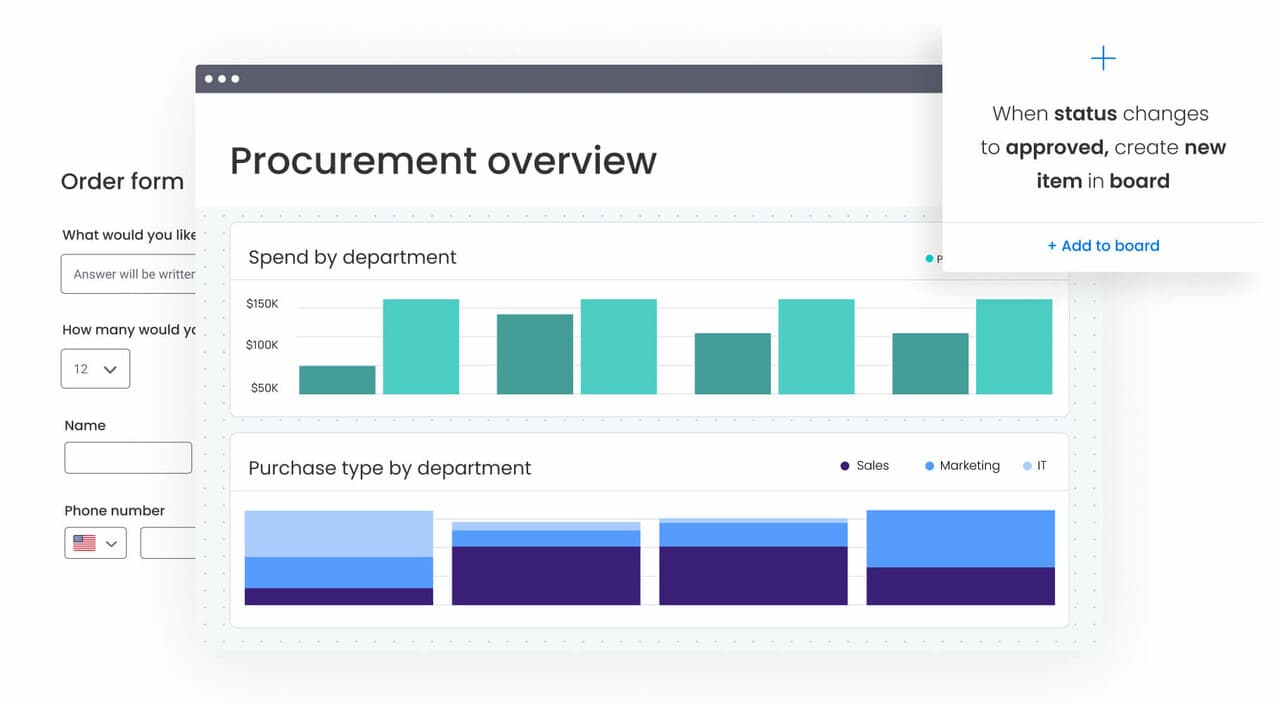
What business functions can you optimize with ERP?
Enterprise resource planning software streamlines a variety of business functions, including:
Human resources
An ERP system with human resources management functionality encompasses all employee lifecycle aspects, including hiring, payroll, performance, retention, and more, to improve employee experiences and support HR teams.
Finance
Finance is at the core of any business, and ERP systems offer a wide range of accounting and financial management features. For example, your ERP tool might include features to handle accounts payable/receivable, general ledger, budgeting, cash flow management, tax management, and more.
Manufacturing
ERP systems manage product lifecycle planning, inventory control, and supply chain logistics. By providing real-time insights into production schedules and raw material requirements, ERP ensures smooth operations, minimizes delays, and supports cost-effective manufacturing processes.
Commerce
Whether you operate a brick-and-mortar store or an ecommerce platform, ERP software enhances customer experience and business efficiency. It enables integrated order management, payment processing, and inventory tracking to deliver seamless transactions and improved customer satisfaction.
Supply chain management
ERP systems revolutionize supply chain management by offering real-time tracking, demand forecasting, and supplier coordination. With these tools, businesses can reduce operational costs, prevent stockouts, and ensure timely delivery of goods and services.
3 signs you need ERP software
If you’re already committed to a tech stack, you might question if you should switch to ERP systems. Typically, the time is right if any of the following resonate with you:
You struggle to cascade objectives down to your teams
Organizations often invest significant time and effort in defining objectives and strategies, but a lack of alignment will derail even the best plans. Without clear responsibilities, ownership, and communication, cascading objectives to teams becomes a daunting task. An ERP system enhances transparency which keeps everyone working toward the same goals, with clarity in priorities and ownership.
You lack visibility into progress, resources, and risks
As organizations scale, maintaining visibility and control over ongoing work is a serious challenge. Leaders may struggle with incomplete data, siloed tools, and inefficient reporting systems. ERP software provides a holistic view of progress, resource allocation, and potential risks, empowering executives to make informed decisions and course-correct as needed.
You experience delays in execution
Delays often stem from inefficient workflows, poor resource management, and insufficient communication. These bottlenecks hinder progress and slow innovation. With ERP software like monday work management, organizations streamline workflows, optimize resource utilization, and foster collaboration between departments, resulting in faster execution and greater agility. You can take a demo here.
Get started6 things to look for in an ERP system
ERP systems aren’t created equal, so how do you know what to look for when comparing vendors?
1. Integrations
While an ERP houses multiple business units, the right platform allows you to extend its value further by connecting with third-party software providers, either using native integrations or an open API. For example, you might want to sync with Salesforce, QuickBooks, or other apps you’re already using so your team has access to key data.
2. Scalability
As business requirements change with time, you’ll want the reassurance that your ERP investment today will still deliver value several years from now on. Whether you anticipate a significant headcount change, new business directions, or a geographic expansion, the right platform will grow to meet your needs.
3. Customization
Plug-and-play ERP systems are convenient, allowing you to hit the ground running with templates and automated workflows from day one. But they should never be rigid. The best ERP solutions offer the ability to customize processes to fit your organization’s unique needs.
4. User-friendly interface
User engagement is a huge barrier to success for many enterprise organizations. Your employees need to work with an intuitive product they love that simplifies their day to day operations. Check vendor reviews and take platform demos to make sure the ERP system you’re considering is a product your team will embrace.
5. Accessibility
Companies can use an on-premises or cloud-based ERP system. While both types bring efficiencies to core business processes, such as workforce planning, budgeting, forecasting, and inventory control, cloud-based systems allow workers to access the data they need from their computers or mobile devices, including laptops, smartphones, and tablets. This mobility lets your team track operations on any device from any location.
6. Security and compliance
Protecting sensitive business and customer data should be a top priority when selecting an ERP system. The ideal platform will offer robust security features, such as encryption, multi-factor authentication, and access control, to safeguard your data. Ask vendors about their security protocols, compliance certifications, and how they handle data privacy to keep your business protected against breaches and regulatory fines.
A brief history of ERP
ERP systems originated in the 1960s, initially packaged as Material Requirements Planning (MRP) software for manufacturing processes. By the 1990s, they had evolved to provide a suite of separate systems with modules for accounting, financial services, supply chain management, etc.
As internet adoption skyrocketed around the turn of the millennium, cloud solutions sprung up as an alternative to the cumbersome ERP legacy models companies had relied on. These modern alternatives provided real-time access and advanced analytics for companies requiring smarter decision-making and streamlined operations.
What is the future of ERP?
Technology never stands still, and there are some interesting themes cropping up in the future of enterprise resource software:
Generative artificial intelligence
Unsurprisingly, we’re already seeing a shift toward companies using ERP tools with baked-in generative AI features, which simplify painstaking manual processes. Forrester’s Vice President and Principal Analyst, Liz Herbert, explores one possible use case:
In ERP, one of the big tasks of finance is to close the books and report on the financials externally, whether that’s to shareholders or the board or just managers. So, one early use case is simply narrative reporting, rather than a person go through all of the financial data and talk about where the business is performing well and where it isn’t.
Customizable experiences
As ERP systems become more sophisticated, expect a greater emphasis on user experience (UX) and building customizable interfaces for different departments and roles. End users should be able to tailor their dashboard to the tasks they perform every day, leading to improved productivity and engagement. No-code and low-code building blocks achieve this, enabling employees to personalize the software to their preferences and leaning on built-in chat functionality to provide real-time support.
The rise of co-pilots
The next generation of ERP systems will be able to make decisions like a co-pilot, using predictive analytics and machine learning to support decision-making throughout the organization. By analyzing data from different departments and providing insights, these co-pilots can help leaders identify patterns, detect potential risks, and suggest courses of action for optimal results. Liz Herbert explains some of the scenarios a co-pilot could help with:
“If we tweaked the pricing like this, what would be the impact if we did our resourcing like that? What would be the impact if we shifted our supply network to be more centric on a geography close to us? What happens if the Suez Canal runs into trouble and we can’t ship goods through there, or it costs us millions more to have to go around the southern tip of Africa? Those kinds of questions are what any operational manager often outside of finance is dealing with that ERP can help them address.”
Vertical integrations
Another trend in the future of ERP is the integration of industry-specific features and functionalities. As companies in different sectors face unique challenges, their ERP systems will need to adapt and provide tailored solutions. Expect to see more specialized modules for industries such as healthcare, retail, utilities, engineering, and financial services.
Execute enterprise resource planning with monday work management
monday work management delivers unparalleled value for enterprise companies seeking a scalable, flexible ERP solution. Our robust platform, custom-built on top of the monday.com Work OS, empowers businesses to bridge the gap between strategy and execution by uniting teams, streamlining processes, and providing real-time visibility into every level of operation.
Here’s how monday work management enables companies to confidently meet their goals:
Flexible, standardized processes for seamless execution
Teams can easily customize workflows for 200 different use cases, with managed templates, a workflow builder, and automation tools maintaining compliance and efficiency. Built-in resource allocation tools optimize talent and assets, empowering organizations to adapt quickly to changing priorities.
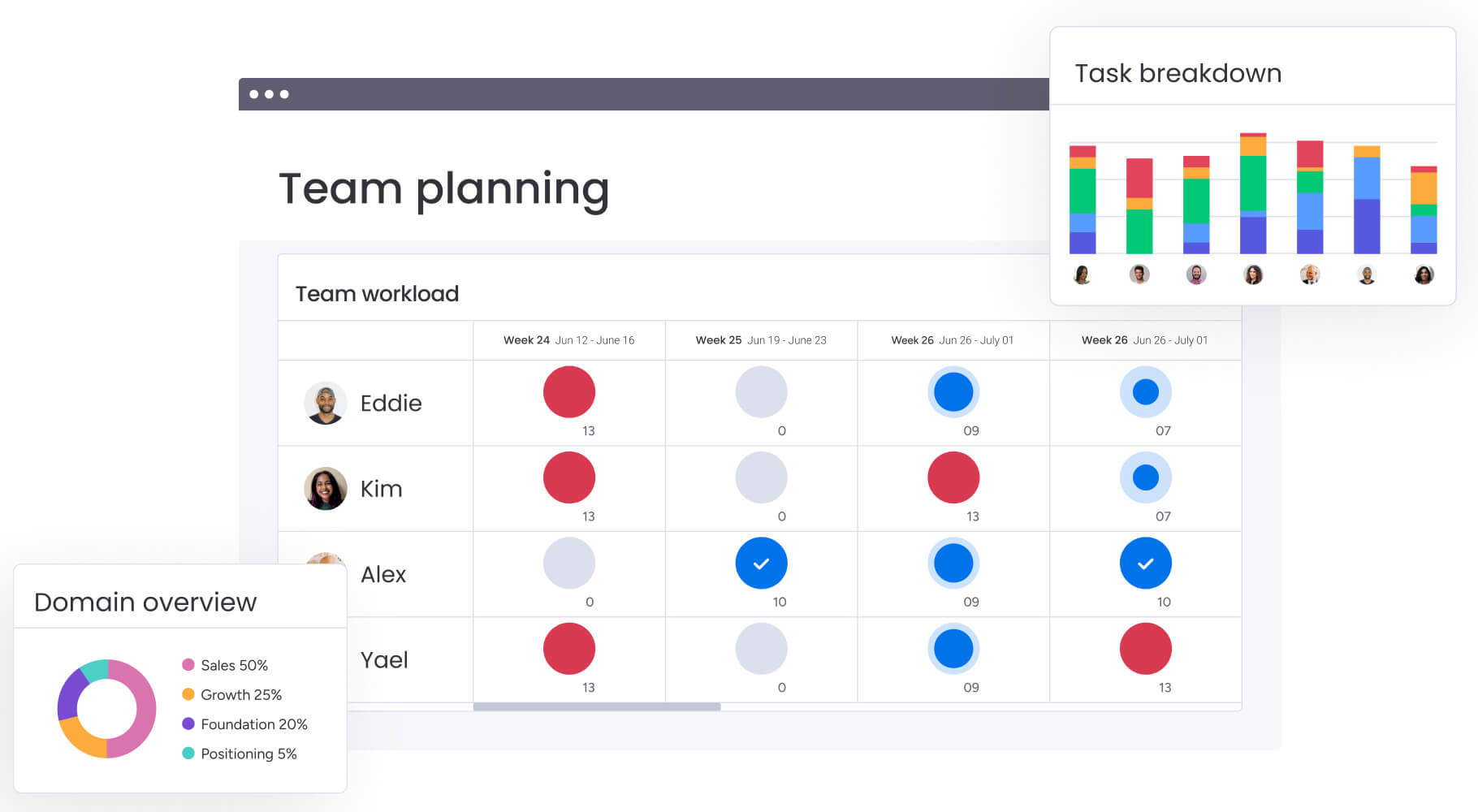
High user adoption for accurate data and insights
Features like drag-and-drop functionality and customizable views make it easy for employees to engage with the platform. Higher engagement translates to more accurate data input, giving leaders a real-time view of operational metrics and enabling precise, data-driven decisions.
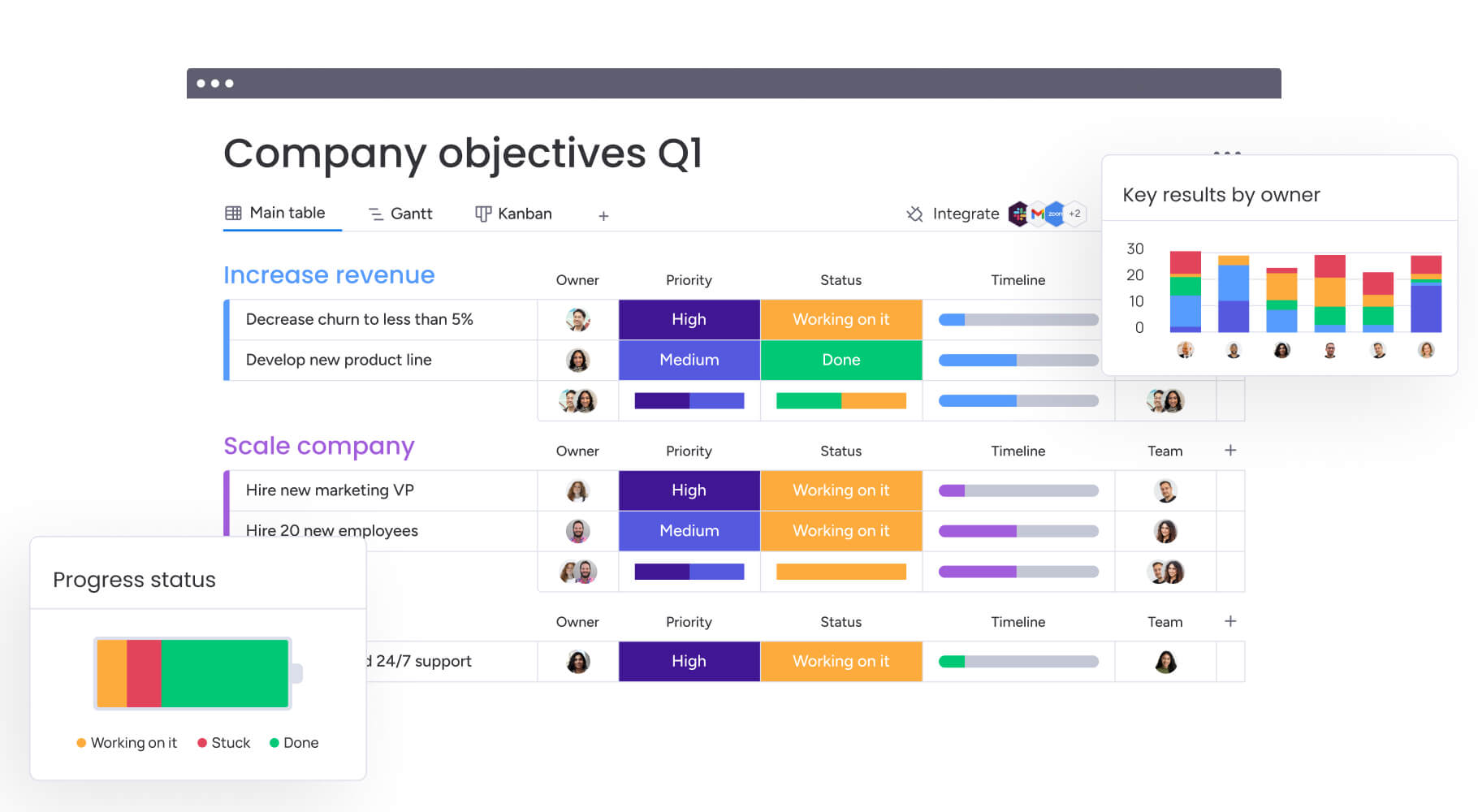
Faster time to value
Unlike traditional ERP systems, which can be rigid and slow to deploy, monday work management is a best in class solution that lets companies quickly iterate processes to drive operational efficiency from the outset. Start creating value within days, not months, thanks to ready-made templates, self-service customization options, and a low-code, no-code interface.
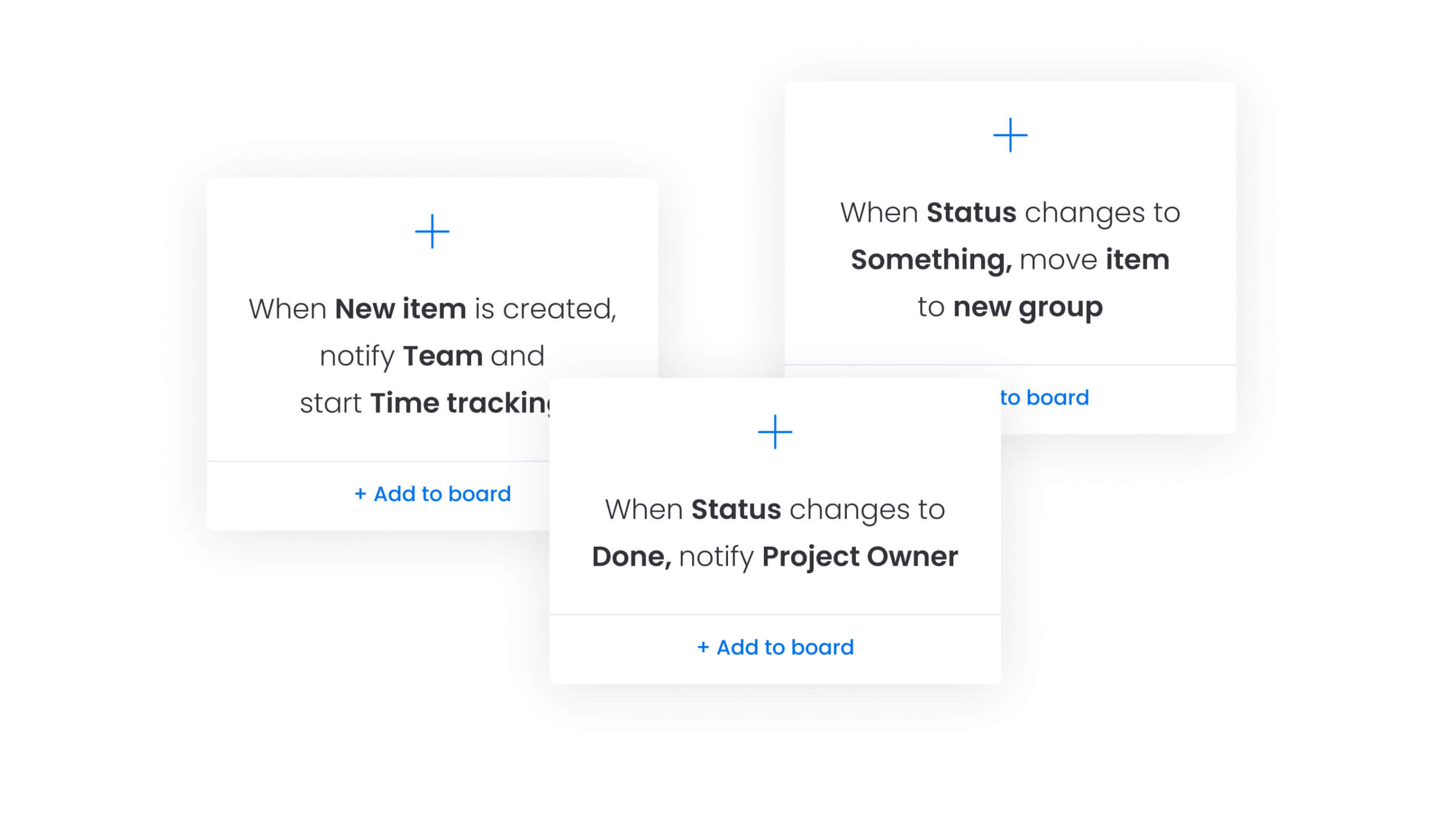
Comprehensive visibility and control
Real-time dashboards and advanced analytics provide complete visibility into progress, resources, and risks. monday work management enables portfolio management, allowing executives to oversee multiple projects at once while drilling down into the details when needed. Features like automated reporting, cross-project dependencies, and health status overviews keep leaders informed and in control at every stage of execution.
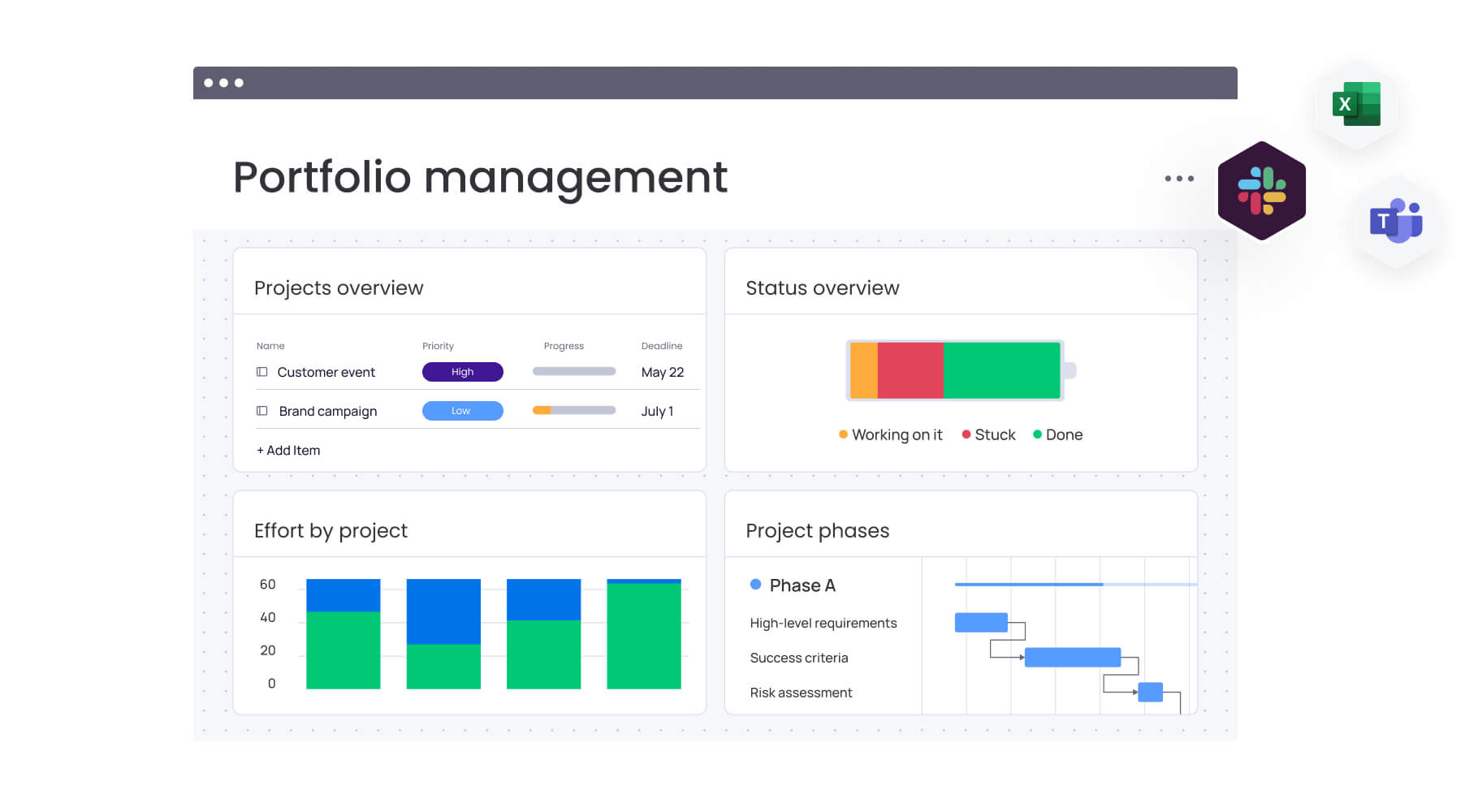
Secure, scalable platform built for enterprise growth
monday work management offers enterprise-grade security features to protect sensitive business information for any size of business. This makes it an ideal solution for enterprises looking to expand while maintaining strict compliance with industry standards.
See how monday work management streamlines workflows, improves visibility, and provides the tools you need to align your team with organizational goals. Book a demo and discover how to execute your strategy with confidence.
Get startedFAQs
What are the 5 components of ERP?
Five core components of enterprise resource planning systems are accounting and financial management, human capital management (HCM), customer relationship management (CRM), business intelligence, and supply chain management.
What is the difference between ERP and CRM?
A CRM is a type of software that enhances the customer experience. A well-built ERP system includes CRM functionality but connects with multiple other business processes, such as HR, finance, and supply chain management.
What are the 3 common types of ERP?
There are three common types of ERP implementation models: onsite, cloud-based, and hybrid models. Onsite implementations require companies to purchase and maintain their own hardware and software. Cloud-based systems allow for remote access over the internet, while hybrid models combine both onsite and cloud-based elements. Some hybrid approaches use a two-tier ERP architecture, housing an onsite ERP at company headquarters while using cloud-based ERP services for regional offices.
